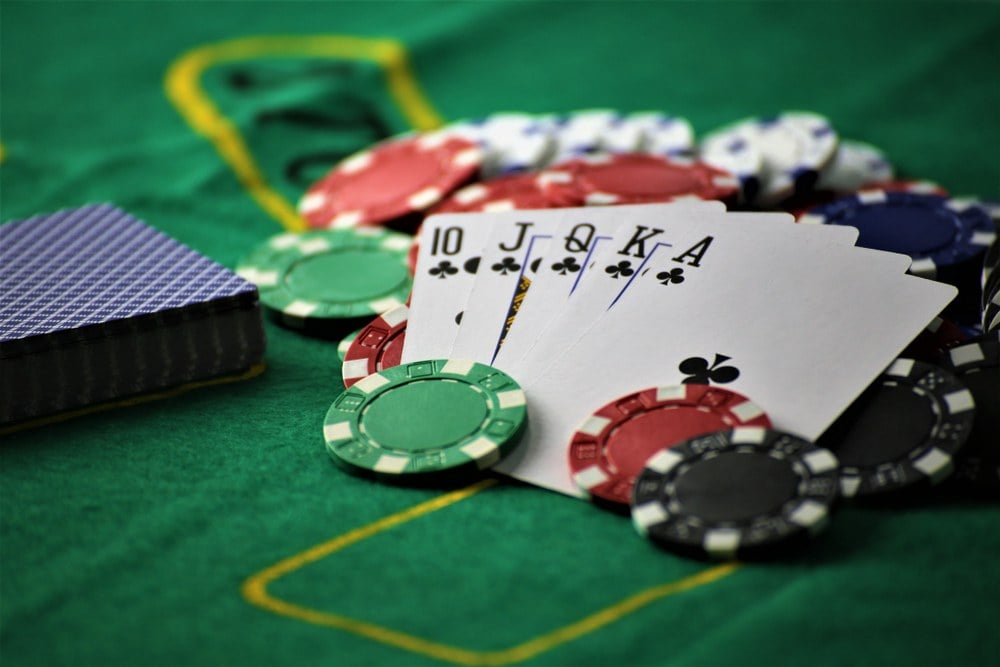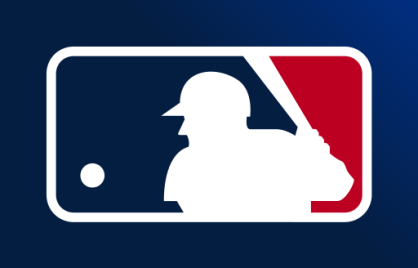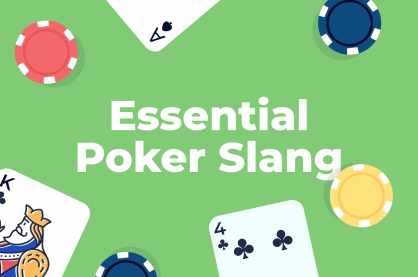Poker Odds Explained: Essential Tips for Texas Hold ‘Em

Poker Odds For Beginners: What You Need to Know
- Poker Odds Basics: Poker odds relate to the probability of certain outcomes occurring and can guide your decisions. These odds can be presented as a ratio or percentage.
- Pot Odds: Pot odds are the ratio of the current pot size to the cost of a contemplated call. They help you decide whether a call is profitable in the long run based on your potential winnings compared to the cost of playing.
- Hand Odds: The odds of making a particular hand (such as a flush or a straight) by the river. Knowing these odds can help you determine whether you should continue to pursue a drawing hand.
- Counting Outs: ‘Outs’ represent cards that could improve your hand to a winner. By counting your outs, you can calculate the odds of drawing one of these cards and use that to inform your betting decisions.
- Implied Odds: These take into account predicted future betting. Implied odds calculate potential future winnings to help you make decisions in the present.
This essential guide will teach you everything you need to know about poker odds — including how to calculate your poker hand chances of winning at any given time. This short read could earn you fortunes.
How to Win in Poker Has Changed — From Doyle to Doug
People often picture Old Hollywood scenes of poker games in Wild West saloons, where cowboys stare each other down trying to get a read. But real life is not like the movies — and poker is no exception. How to win in poker used to be about people skills. Now it’s more about probabilities and percentages.
This shift marks a generational change. Consider two of poker’s legends: Doyle Brunson and Doug Polk.
Doyle Brunson
Doyle Brunson, known as “the Godfather of Poker,” was an old-school Texas cowboy who helped launch the World Series of Poker. In 1978, he published How I Made Over $1,000,000 Playing Poker (later renamed Super System) when a dozen eggs cost just $0.82.
He introduced Texas Hold ‘Em to the world and mastered the art of the poker face on TV. “Show me your eyes and you may as well show me your cards,” Doyle famously said.
Doug Polk
Now, compare that to one of today’s most influential players, Doug Polk. In 2018, the fast-talking, bro-tank-wearing multimillionaire poker star said on YouTube, “I never go with my instincts.” At just 29, Polk was live-streaming a bankroll challenge where he turned $100 into $10,000 — relying heavily on a randomizer to guide his decisions.

Image Credit: WPixz/Shutterstock
Poker is Now a Volume Game
Doyle focused on interpreting each hand in the moment, aiming to make the right decision that one time. Doug’s strategy, shaped by the explosion of online poker, is about being right most of the time across a large number of hands. You can only play one hand at a time in live poker with a live poker dealer.
But when you play online poker, you can play many tables at once — shifting the strategy from getting it right in a single instance to being right over a larger sample size.
Because of this, how to play poker from a mathematical perspective has become exponentially critical. You need to know your poker hand chances constantly and how to calculate poker odds over a long period of time.
What’s changed in the last 50 years? In a word: volume.
Understanding Poker Odds
A few FAQs for approaching how to play poker from a mathematical perspective.
- What are poker odds? They represent the likelihood that your hand will win, typically by the river in Texas Hold ’em.
- Why are poker odds important in Texas Hold ‘em? Luck is not sustainable. You might get lucky and win a single hand, but it’s nearly impossible to rely on luck to win 100 hands. Eventually luck dries out. Only players who consistently commit chips when they’re statistically favored can be lifetime winners.
- How do poker hand chances work? Every hand has a probability of winning. For example, if your hand has a 60% chance of winning against an opponent’s 40%, it’s almost like a coin flip in that moment. But if you repeat that scenario enough times, the 60% favorite will gain a significant advantage over the long run.
Poker Odds Cheat Sheet
There are only so many combinations of hand rankings in the deck. Even by playing a game of video poker you will run through them fairly quickly. (And yes, if you’re new to poker and struggling with basic hand rankings, I highly recommend playing free video poker to train you on the different hand combinations).
A beginners cheat sheet for the most common poker odds in Texas Hold ‘Em is an invaluable tool. You can print them out like a master list or keep reading as I break the most important ones down in more detail.
- Flopping a pair… 29%
- Flopping two pair… 2%
- Flopping a set… 12%
- Flopping a flush… 0.84%
- Flopping a straight with two connected hole cards… 1.3%
- Making a flush by the river… 35%
- Making an open-ended straight by the river… 32%
- Making a gutshot straight by the river … 16%
- Making a full house by the river if you’ve flopped a set… 33%
- Pocket pair vs two overcards … 51%
- Lower pocket pair against higher pocket pair … 18%
- Pair vs one overcard … 70%
- Kicker pairing … 25%
- Pairing either overcard after the flop … 25%
- Backdoor/runner-runner flush … 4%
Even though this is a cheat sheet for poker beginners, you’d be surprised how many regulars don’t know some of these essentials. People chase backdoor flushes all the time — even though they’ll miss with near 95% frequency.

Image Credit: WPixz/Shutterstock
Tools for Calculating Poker Odds
If you’re feeling overwhelmed by this daunting list, have no fear — the poker probability calculator is here.
There are many free poker apps you can download on your smartphone to assist you with poker odds calculation. Simply search for “poker odds calculator” or “free poker odds calculator” in the app store.
Personally, I like using the most basic and simple versions I can find. Download a few but ignore any poker probability calculator that gets too fancy — the more difficult it is to navigate, the less likely you are to use it.
You are going to want to find one you like and use it frequently.
How Poker Odds Are Used
When I first started playing poker, I would enter every single poker hand once I’d folded. For example, let’s say I had Ace-King and lost to my opponent’s Ace-Queen.
Did I make the wrong decision? Or did I just get unlucky?
When you input Ace-King vs. Ace-Queen in a poker probability calculator, the answer becomes clear: I was around a 70% favorite.
Now I knew I had made the right decision, and wouldn’t be second-guessing myself.
Better yet, I didn’t have to rely on anecdotal evidence or gut instincts telling me if I had made the correct moves. The math provided feedback for me.
If you feel disoriented at the casino and unsure of your decisions, this is the place to start. Enter every hand you see revealed at showdown — including hands played solely by your opponents — to get accustomed to the poker odds. Soon enough, you will see the same probabilities recurring over and over again. They will become like second nature and you’ll likely memorize basic poker odds.

Image Credit: Mix Tape/Shutterstock
Calculating Poker Odds Yourself
Let’s say you’re not ready to study a whole series of poker stats, and you’re a ways away from committing the likelihood of a flush or straight draw completing to memory. There is another solution: calculate the poker odds yourself.
Before I share the method, I must warn you, this trick provides a rough estimate. It is not always exact and should be taken with a grain of salt. It works in most scenarios, but not all.
Here are the steps.
- Thinking in outs. An “out” is any card that improves your hand to a winning combination. For instance, if you need one more heart to complete a flush, any heart left in the deck is one of your outs.
- Count your outs. To determine how many outs you have, consider the total number of cards in the deck and how many of those will help your hand. A standard deck has 52 cards and each suit has 13 cards. In the case of a flush draw, if you hold two hearts and two more appear on the flop, there are nine hearts remaining (13 total hearts minus the four already visible). Those nine hearts are your outs.
- Multiply by 4 or by 2. The “rule of 4 and 2” helps estimate your chances of hitting one of your outs. Multiply the number of outs by 4 if you’re on the flop, or by 2 if you’re on the turn. For example, if you have nine outs on the flop, multiply 9 x 4 for a 36% chance of making your hand by the river. If you’re on the turn, with only one card left to be dealt, multiply by 2 instead: 9 x 2 gives you an 18% chance.
Many poker instructors emphasize teaching you how to calculate poker odds by counting your outs. I personally do not recommend this method.
Poker can be stressful—big pots raise your blood pressure and heighten emotions, making it difficult to think clearly. The last thing you want to be doing under pressure is quick mental math… let alone something as clunky as counting outs before multiplying by 4 and 2.
A much more reliable method is memorization. By memorizing key odds, you avoid the risk of mental errors and take off the pressure.
Word of caution: Counting outs is only effective if you calculate them correctly. You might think you have nine outs to complete a flush, but some of those cards could give your opponent a full house. It’s not a perfect science. The same risk applies with memorization — your odds of winning can shift depending on what exactly your opponent is holding.

Image Credit: Ulf Wittrock/Shutterstock
Advanced Poker Math Strategy: Pot Odds
OK, so you know the math. Now what? How do you calculate poker odds and leverage them to your strategic advantage?
The final puzzle piece is understanding pot odds. These will inform you on how to make good, mathematically sound decisions.
Poker pot odds refer to the ratio between the current size of the pot and the cost of a potential call. They help you decide whether it’s profitable to call a bet in the long run. Essentially, pot odds tell you if the reward (the pot) is worth the risk (your bet).
How Pot Odds Work:
- Calculate the Pot: First, determine how much is already in the pot.
- Determine the Cost to Call: Figure out how much you need to contribute to stay in the hand.
- Compare the Ratio: Compare the size of the pot to your call.
Example:
Let’s say the pot has $100, and your opponent bets $25. Now the total pot is $125, and it costs you $25 to call. Your pot odds are $125:$25, or 5:1.
Using Pot Odds:
Compare these odds to the odds of hitting your hand (based on your outs). For instance, if you’re drawing to a flush with 9 outs, you have roughly a 4:1 chance of hitting by the river. If your pot odds are better than your drawing odds (e.g., 5:1 vs. 4:1), it’s mathematically profitable to call in the long run.
Pot odds help you make smarter decisions, ensuring you’re not risking too much for a return that doesn’t justify the call.
The Big Picture
Again, don’t work yourself into a frenzy by not being able to do mental math on-the-fly. Ratios may not be your strongest skill.
That doesn’t mean you shouldn’t take pot odds seriously. You absolutely should, even if you only grasp the basics.
Let’s revisit the flush draw example where you have a 36% chance of completing your hand, and there’s $200 in the pot. Now, consider two extremes:
- If your opponent bets $5,000, should you call? Definitely not. Risking $5,000 to win a small pot is a bad idea, especially when your hand only has a 36% chance of hitting.
- If your opponent bets $1, should you call? Absolutely. You’re only risking $1 to win a reasonable pot, and with a 36% chance of winning, the odds are in your favor. It’s a great opportunity to take a calculated risk.
Think of it like buying a lottery ticket. You know the odds of winning are slim, but paying $5 for a chance at $1,000,000 feels like a reasonable gamble because the potential payoff far outweighs the small risk. The same principle applies to pot odds in poker.
Mastering Poker Odds for Long-Term Success
The game of Texas Hold ‘Em has evolved from relying on instinct and people skills to leveraging probabilities and statistical advantages. While old-school players like Doyle Brunson focused on reading opponents and individual situations, modern poker is more about consistently making mathematically sound decisions, as exemplified by Doug Polk’s data-driven approach.
By learning to calculate and apply poker odds — whether through outs, the rule of 4 and 2, or pot odds — you’ll be able to minimize the role of luck and make profitable choices over time. Poker is about making the right moves more often than not, and knowing the odds helps you do just that.
Stay calm and trust the math. It may not beat luck every time, but it does over time.
Title Image Credit: Rawpixel.com/Shutterstock


